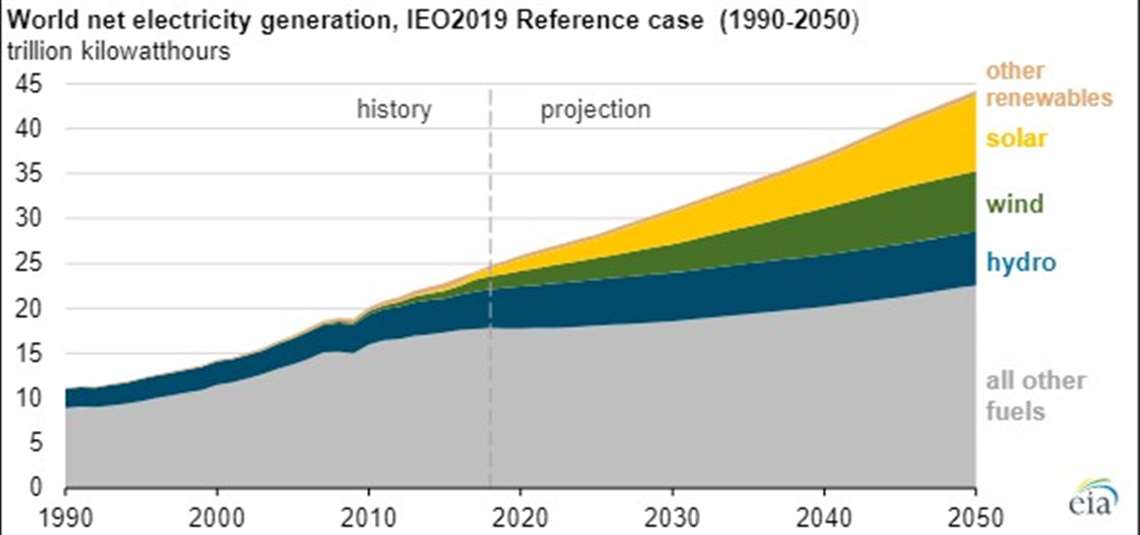EIA: Renewables To Produce 49% Of Global Electricity by 2050
02 October 2019

In its International Energy Outlook 2019 (IEO2019), the U.S. Energy Information Administration (EIA) projects that renewables will collectively increase to 49% of global electricity generation by 2050.
Of the top three renewable sources, EIA expects solar’s share of generation to grow the fastest and hydroelectric’s share to grow the slowest.
EIA’s international outlook includes analysis of eight countries and eight multicountry regions. Different regional- and technology-specific factors influence the growth rates of renewable technologies throughout the world.
In 2018, 28% of global electricity was generated from renewable energy sources, most (96%) of which was produced from hydropower, wind, and solar technologies.
Resource availability, renewable policies, regional load growth, and declining technology costs drive EIA’s projected increase in global electricity generation from solar technologies. As more solar power systems have been installed, installation costs have experienced the steepest cost declines of all renewable technologies in recent years, and EIA expects that they will continue to decline as a result of learning-by-doing effects.
In many regions, solar resources are also generally more abundant than wind resources and typically follow very predictable daily and seasonal generation patterns, the EIA said. Resource availability and predictability and relatively simple plant construction technology also support favorable economics for solar photovoltaics, the most common solar generation technology in the IEO2019 Reference case.
EIA projects that China will see the most growth in solar generation because of its growing demand for electricity, favorable government policies, and competitive technology costs. Growth in solar generation is also strong in India, European countries i nthe Orgalization for Economic Cooperation and Development (OECD), and the U.S.—each of which have near-term renewable policies in place. IEO2019 Reference case projections for the United States are consistent with those in the Annual Energy Outlook 2019 Reference case.
Wind power is still a relatively new technology, and the declining capital costs it experiences as a result of learning-by-doing effects are not as steep as solar technologies. Wind technology adoption has significant growth potential, however, because many wind resource areas around the world are not yet developed.
Similar to solar power, EIA forecasts that near-term renewable policies in India and OECD Europe will lead to wind generation growth in those areas. In China, wind is among the many sources meeting the country’s increasing demand for electricity.
POWER SOURCING GUIDE
The trusted reference and buyer’s guide for 83 years
The original “desktop search engine,” guiding nearly 10,000 users in more than 90 countries it is the primary reference for specifications and details on all the components that go into engine systems.
Visit Now
STAY CONNECTED




Receive the information you need when you need it through our world-leading magazines, newsletters and daily briefings.
CONNECT WITH THE TEAM









